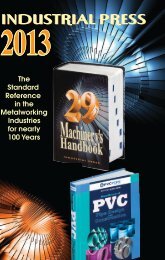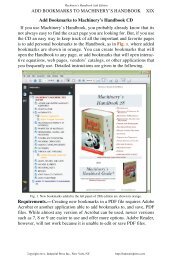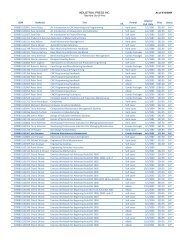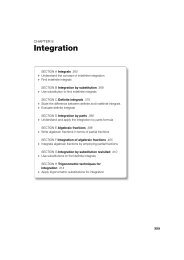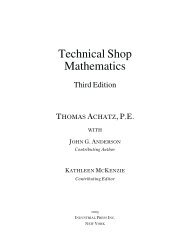computer numerical control programming basics - Industrial Press
computer numerical control programming basics - Industrial Press
computer numerical control programming basics - Industrial Press
You also want an ePaper? Increase the reach of your titles
YUMPU automatically turns print PDFs into web optimized ePapers that Google loves.
Machine Types<br />
Lathe<br />
The engine lathe, one of the most productive machine tools, has<br />
always been an efficient means of producing round parts (Fig.<br />
4). Most lathes are programmed on two axes.<br />
• The X axis <strong>control</strong>s the cross motion of the cutting tool.<br />
Negative X (X-) moves the tool towards the spindle<br />
centerline; positive X moves the tool away from the spindle<br />
centerline.<br />
• The Z axis <strong>control</strong>s the carriage travel toward or away from<br />
the headstock.<br />
Fig. 4 The main axes of a lathe or turning center. (Emco Maier Corp)<br />
Milling Machine<br />
The milling machine has always been one of the most versatile<br />
machine tools used in industry (Fig. 5). Operations such as<br />
milling, contouring, gear cutting, drilling, boring, and reaming are<br />
only a few of the many operations which can be performed on a<br />
milling machine. The milling machine can be programmed on<br />
three axes:<br />
• The X axis <strong>control</strong>s the table movement left or right.<br />
• The Y axis <strong>control</strong>s the table movement toward or away from<br />
the column.<br />
• The Z axis <strong>control</strong>s the vertical (up or down) movement of<br />
the knee or spindle.<br />
10



